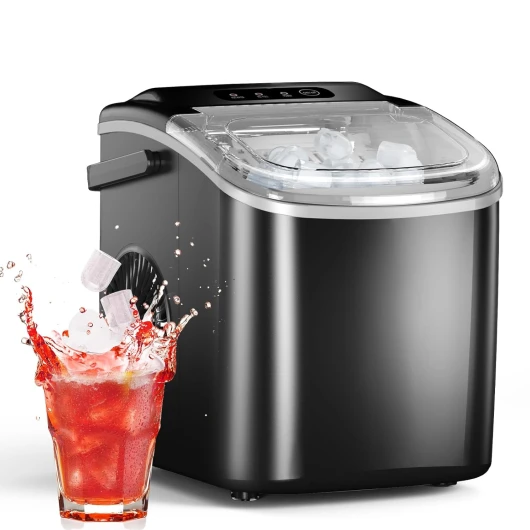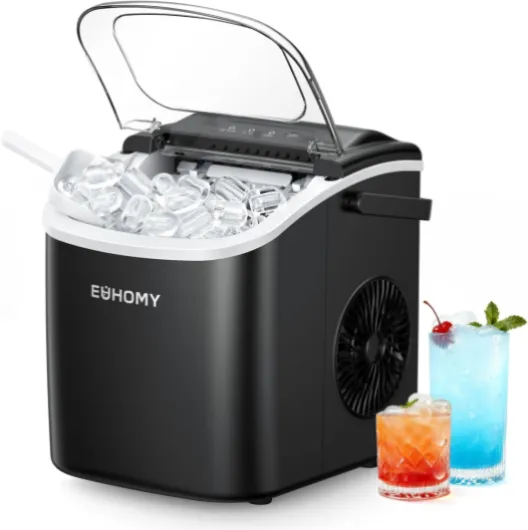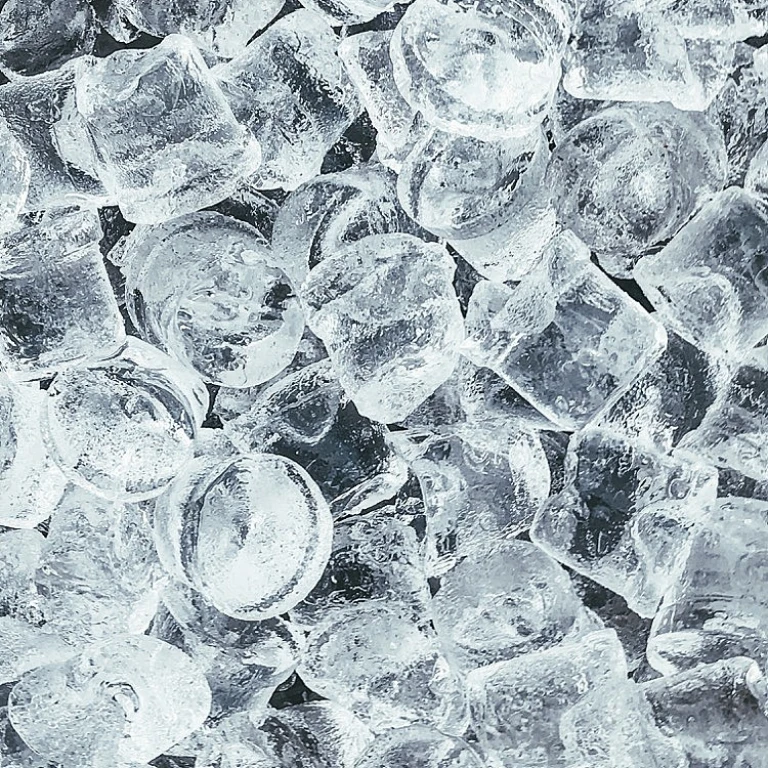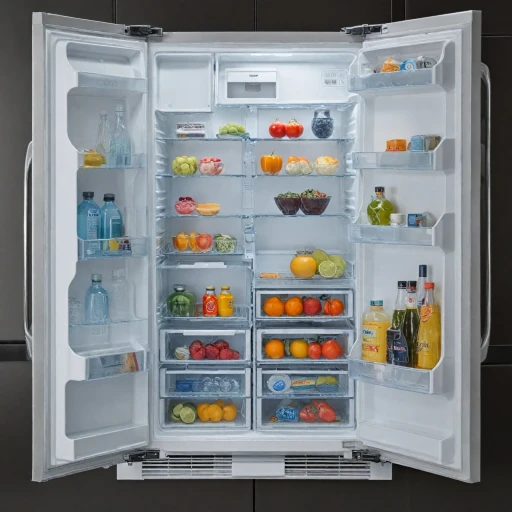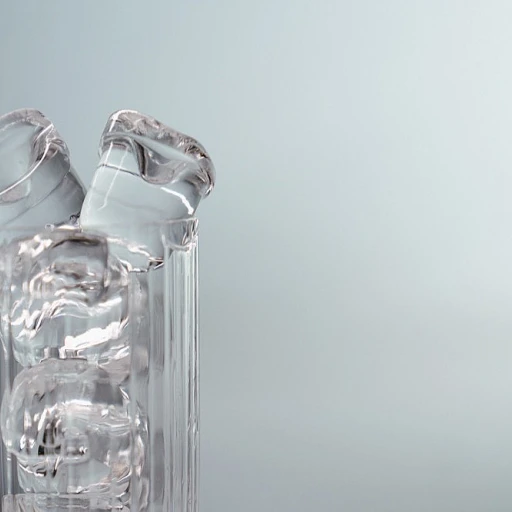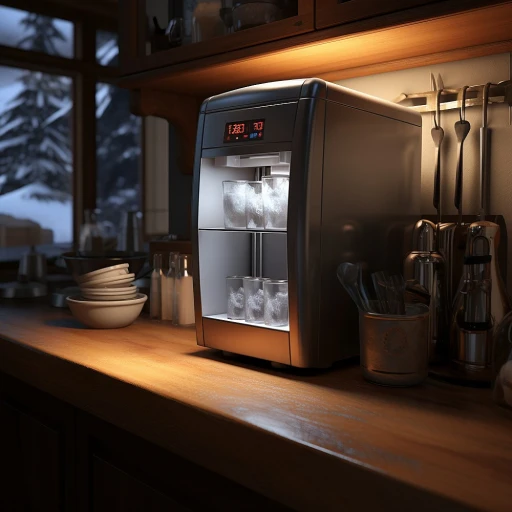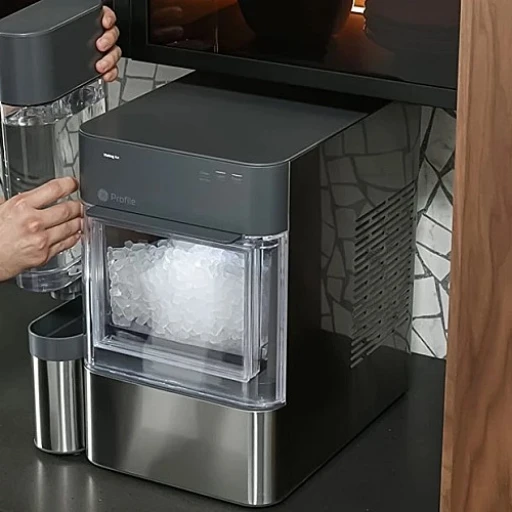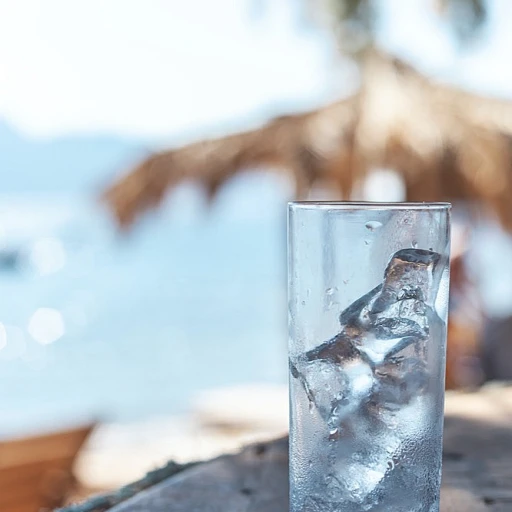
How Freeze Functionality Works
Understanding the Freeze Technology in Ice Makers
The freeze functionality in ice makers is a marvel of modern engineering, crucial to producing that refreshing ice we all enjoy. This feature essentially revolves around rapidly transforming water into ice. At the heart of this process is the refrigeration cycle, which utilizes a compressor, condenser, expansion valve, and evaporator to create the freezing conditions necessary. When water flows into the ice maker's tray, it's cooled below freezing point, enabling the water molecules to solidify. To maximize efficiency, temperature sensors play a critical role in maintaining optimal freezing conditions. Ice makers employ different cooling techniques, including air cooling as well as more sophisticated water cooling systems. Additionally, an integral component to consider is the ice level control board, which helps regulate the production and ensures the continuous availability of ice without overproducing. Throughout the cooling process, various factors come into play, affecting the speed and quality of freeze, which we will explore further. Understanding these intricacies sheds light on the advanced technology and engineering prowess that allows ice makers to function efficiently, keeping our beverages delightfully chilled.Factors Affecting Freeze Efficiency
Influences on Freezing Power
The efficiency of the freeze functionality in your ice maker is contingent upon several key factors. These elements can either enhance or diminish the overall freezing power, affecting not only the speed at which your ice is made, but also its quality and consistency.
- Ambient Temperature: The surrounding temperature can significantly impact freezing efficiency. Ice makers operating in cooler environments generally have an advantage in maintaining optimal performance compared to those placed in warmer settings.
- Water Quality: High-quality water results in better ice. Hard water, which contains higher mineral content, might slow down the freezing process and affect the clarity of the ice.
- Ventilation: Proper ventilation ensures heat is effectively dispersed away from the compressor. Poorly ventilated spaces cause the ice maker to work harder to reach the desired freeze levels.
- Insulation: Good insulation within the ice maker keeps the cold air inside, helping maintain the necessary temperatures for efficient ice production.
For an in-depth understanding of ice makers, including aspects such as installation and maintenance, consider referring to resources like this comprehensive guide.
Comparing Different Freeze Technologies
Differences in Freeze Technologies Uncovered
When it comes to selecting an ice maker, understanding the variations in freeze technologies is crucial. Each technology offers distinct advantages, and your choice can influence the overall performance and suitability for your specific needs. Here, we delve into the diversity of freeze mechanisms available on the market.
Compression-Based Freezing: This traditional approach uses a compressor to pressurize and circulate refrigerant, ultimately extracting heat from water to produce ice. Known for its reliability, compression-based freezing is widely used in commercial and residential models. Compressors are designed to handle increased loads, making them ideal for high-demand environments.
Peltier Thermoelectric Cooling: Unlike compressors, Peltier systems rely on electrical current to create a temperature differential across semiconductor materials. This results in quieter operation and reduced vibration. However, these systems might not be as efficient as traditional compressors in terms of energy consumption and capacity.
Absorption Refrigeration: Used in some high-end models, this technology employs a heat source to drive the refrigeration cycle. With fewer moving parts, absorption systems can offer enhanced durability and reduced wear and tear. These systems also allow for more flexibility in ice maker placement due to their operation without electricity.
Understanding these technologies helps potential buyers align their ice maker choices with operational needs and environmental considerations. For instance, if silent operation is your top priority, a Peltier-based system may be appealing. On the other hand, if high-efficiency production is crucial, a traditional compressor system might be favorable.
Moreover, it's essential to consider how these technologies impact maintenance and disposal practices, especially if dealing with additional components like dry ice. For further insights on safe disposal of dry ice, explore our comprehensive guide.
Maintenance Tips for Optimal Freeze Performance
Ensuring Consistent Ice Production with Proper Maintenance
Maintaining your ice maker is essential for ensuring its optimal freeze performance. A well-maintained unit not only produces ice more efficiently but also extends the lifespan of your appliance. Here are a few maintenance tips to keep in mind:- Regular Cleaning: Frequently clean the ice maker to prevent mineral buildup and mold growth. Use a mixture of warm water and vinegar or a manufacturer-recommended cleaner. This helps in avoiding any contamination that could affect the taste of your ice.
- Check Water Lines: Inspect the water lines for any signs of kinks or blockages that might impede water flow. Smooth and unobstructed water flow is critical for efficient ice production.
- Assess the Filter: If your unit has a water filter, change it regularly. A clogged filter can disrupt water supply, affecting the freezing process and overall ice quality.
- Monitor Temperature Settings: Ensure the ice maker's thermostat is set at the appropriate temperature. Too high or too low settings can lead to inefficient freezing cycles.
- Inspect for Wear and Tear: Periodically check for any worn-out components, such as seals or gaskets, which might compromise the freezer's efficiency.
- Defrost When Necessary: If your unit accumulates frost, initiate a manual defrost to maintain optimal freezing conditions.
Troubleshooting Common Freeze Issues
Resolving Common Freezing Challenges
Despite the advanced technologies in ice makers, users may encounter freezing issues. Identifying these typical problems is crucial to maintaining efficiency in your appliance.
- Ice Maker Not Freezing Properly: Ensure the thermostat settings haven't been altered. In some cases, the ice maker might require recalibration to accurately measure internal temperatures.
- Irregular Ice Shapes: This could happen if the freeze functionality isn't operating at optimal efficiency. Inspect the water line and filter for any blockages that could affect water flow.
- Over-production of Ice: Over-freezing can lead to an excessive buildup of ice. Regular monitoring and timely defrosting can prevent this issue, maintaining the system's efficiency.
- Ice Maker Leaks: Leaking can significantly impact freezing capabilities. Check seals and connections for any wear and tear, ensuring that they are tightly secured. For comprehensive steps on handling leaks, consider viewing our guide on how to address ice maker leaks effectively.
Addressing these concerns as they arise will help maintain the longevity and performance of your ice maker, ensuring uninterrupted ice production and consistent quality.
Choosing the Right Ice Maker for Your Needs
Selecting the Ideal Ice Maker to Meet Your Requirements
Choosing the perfect ice maker for your needs requires careful consideration of several factors. It's essential to evaluate your specific usage patterns and preferences, as well as your space and budget limitations. Here are the critical aspects to keep in mind:
- Capacity and Size: Consider the quantity of ice you need on a daily basis and the space available for the ice maker. Whether you're hosting large gatherings or simply need a steady supply for your home, understanding your capacity needs is crucial.
- Technology and Efficiency: Different ice makers come with varying freeze technologies. It's beneficial to familiarize yourself with the various types of ice they produce, and how energy-efficient they are.
- Installation and Maintenance: Opt for models that offer straightforward installation processes and consider those with low maintenance requirements for ease of use. Familiarity with the basics of upkeep will help ensure longevity and optimal performance.
- Features and Functions: Examine additional features such as freeze functionality, which can affect performance. Innovations in freeze technology can significantly enhance your experience, as detailed earlier in this series.
- Budget: Ice makers range widely in price, so determining how much you're willing to invest is crucial. Balancing quality and affordability will help ensure you get the best value for your money.
By taking these factors into account, you'll be well-equipped to select an ice maker that perfectly aligns with your needs and preferences. Remember, the right choice can make all the difference in achieving an efficient and satisfying ice-making experience.
-logo-retina.jpg)
